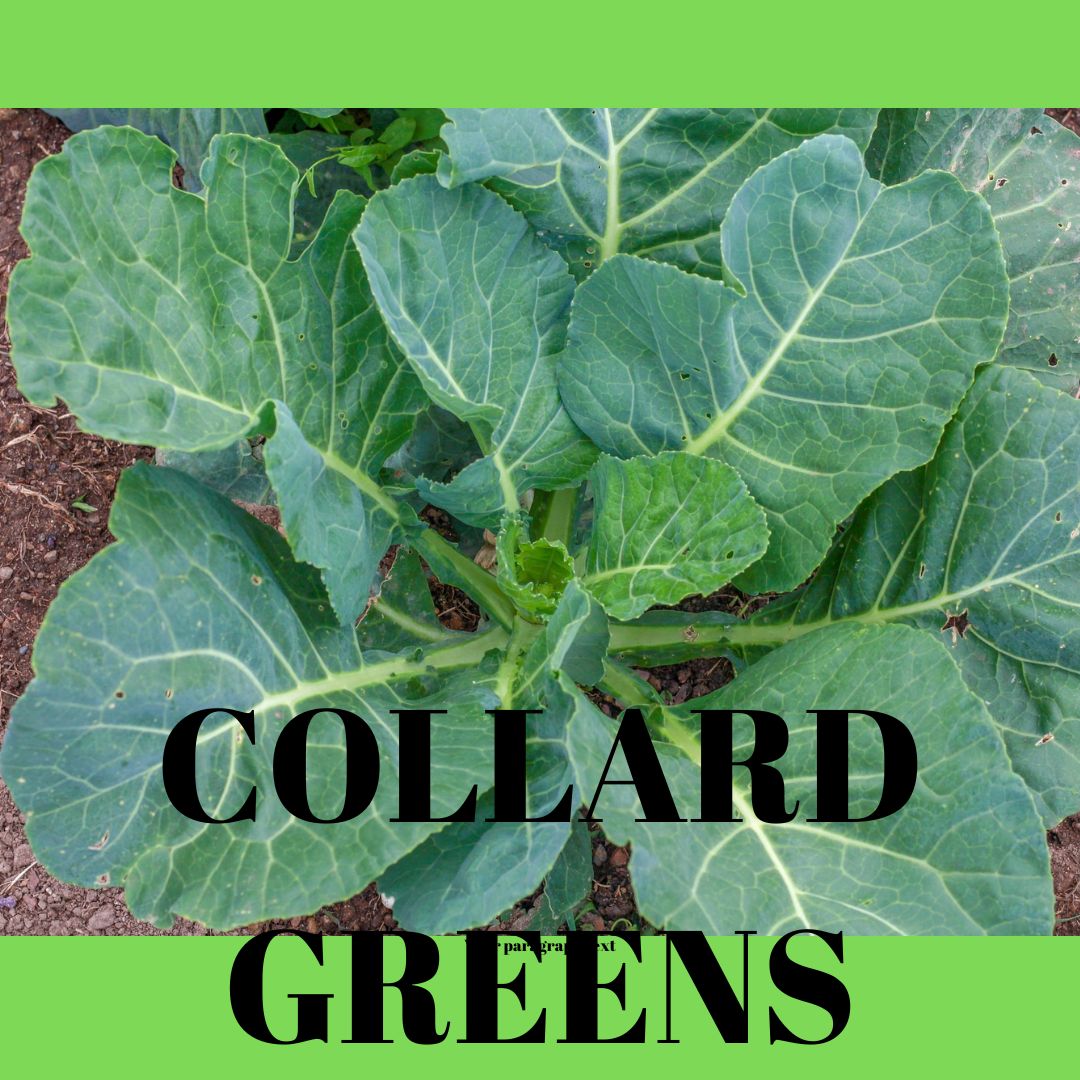
From Garden to Plate: The Ultimate Guide to Growing Collard Greens for a Healthier You
Share
Planting collard greens in your garden can be important for several reasons:
Nutrient-Rich Greens: Collard greens are a nutritious leafy green vegetable rich in vitamins A, C, and K, as well as minerals like calcium and folate. Including them in your garden provides you with a fresh and homegrown source of these essential nutrients.
Dietary Diversity: Adding collard greens to your garden contributes to a diverse and well-rounded diet. Eating a variety of vegetables is crucial for obtaining a broad spectrum of nutrients that support overall health.
Local and Sustainable Food: Growing your own collard greens at home allows you to produce food locally, reducing the carbon footprint associated with transportation and contributing to sustainability. It's a step toward self-sufficiency and reducing reliance on commercially grown produce.
Cost Savings: Home gardening can help save money on grocery bills. Growing collard greens in your garden means you won't need to purchase them as frequently from the store, leading to potential cost savings over time.
Freshness and Flavor: Harvesting collard greens directly from your garden ensures maximum freshness. Homegrown produce often has superior flavor and texture compared to store-bought options that may have traveled long distances.
Educational Value: Planting collard greens in your garden can be an educational experience for both adults and children. It offers insights into the growth cycle of vegetables, the importance of soil health, and the joy of cultivating your own food.
Gardening Therapy: Gardening has been shown to have therapeutic benefits, reducing stress and promoting mental well-being. Taking care of your collard greens and watching them grow can be a rewarding and satisfying activity.
Biodiversity and Ecosystem Support: Home gardens contribute to local biodiversity by providing a habitat for beneficial insects and other wildlife. The presence of a variety of plants, including collard greens, can help support a healthier and more balanced ecosystem.
Control Over Growing Conditions: When you grow collard greens in your garden, you have control over the growing conditions, including soil quality, water supply, and the use of pesticides. This allows you to adopt organic or sustainable gardening practices if desired.
Overall, planting collard greens in your garden is important for promoting a healthy, sustainable, and locally sourced diet while also providing personal and environmental benefits.
Collards are a leafy green vegetable that's part of the cabbage family. Here are some general tips on growing collard greens:
Climate and Soil:
Collards prefer cool weather, so they are often grown in the spring and fall.
They thrive in well-drained, fertile soil with a slightly acidic to neutral pH (6.0-7.5).
Planting:
Start seeds indoors 6-8 weeks before the last expected frost date. Transplant seedlings outdoors when they are about 4-6 weeks old.
Direct seeding can be done in the garden once the soil can be worked in the spring.
Space plants about 18-24 inches apart in rows.
Watering:
Collards need consistent moisture, so water regularly, especially during dry periods. Mulching around the plants can help retain soil moisture.
Fertilization:
Use a balanced fertilizer when transplanting or as seedlings emerge. Side-dress with nitrogen fertilizer throughout the growing season.
Pest Control:
Keep an eye out for pests such as aphids, cabbage loopers, and cabbage worms. Insecticidal soap or neem oil can be used for organic control.
Harvesting:
Harvest the outer leaves when they reach a suitable size, leaving the center leaves to continue growing. This encourages a continuous harvest.
Cold Tolerance:
Collards are quite cold-tolerant and can withstand light frosts. In fact, some gardeners believe that frost can improve their flavor.
Companion Planting:
Collards can be planted with other vegetables like tomatoes, cucumbers, and beans. They also work well with herbs like mint and dill.
Let's delve into the real benefits of adding collard greens to your everyday diet and address the question of protein content.
1. Nutrient-Rich Profile:
Collard greens are low in calories but high in essential nutrients. They are an excellent source of vitamins A, C, and K, and they also provide significant amounts of folate, calcium, manganese, and fiber.
- Antioxidant Properties:
Collard greens contain various antioxidants, including beta-carotene and flavonoids. Antioxidants help protect the body's cells from damage caused by free radicals, potentially reducing the risk of chronic diseases.
- Bone Health:
High vitamin K content in collard greens is crucial for bone health. Vitamin K plays a role in calcium regulation and bone mineralization, contributing to maintaining strong and healthy bones.
- Heart Health:
The fiber, potassium, and folate in collard greens can support heart health. Fiber helps lower cholesterol levels, potassium helps regulate blood pressure, and folate contributes to the reduction of homocysteine levels, which is associated with cardiovascular issues.
- Cancer Prevention:
Some studies suggest that the compounds found in cruciferous vegetables, including collard greens, may have protective effects against certain types of cancer. These compounds may help neutralize carcinogens and inhibit the growth of cancer cells.
- Weight Management:
Collard greens are low in calories and high in fiber, making them a great choice for weight management. The fiber content helps promote satiety, reducing overall calorie intake.
Regarding Protein Content:
While collard greens are not particularly high in protein compared to some other sources, they do contribute to your overall protein intake. One cup of cooked collard greens contains about 5 grams of protein.
It's essential to note that plant-based sources of protein often lack one or more essential amino acids. However, combining collard greens with other protein sources, such as beans, lentils, tofu, or quinoa, can help ensure you get a complete set of essential amino acids.
Including a variety of protein sources in your diet is crucial, especially if you follow a vegetarian or vegan diet. While collard greens can be a valuable part of a balanced diet, it's advisable to complement them with other protein-rich foods.
In summary, adding collard greens to your diet provides numerous health benefits due to their rich nutrient content and potential disease-fighting properties. While they contribute some protein, it's advisable to include a variety of protein sources to meet your daily protein requirements and ensure a well-rounded diet.
